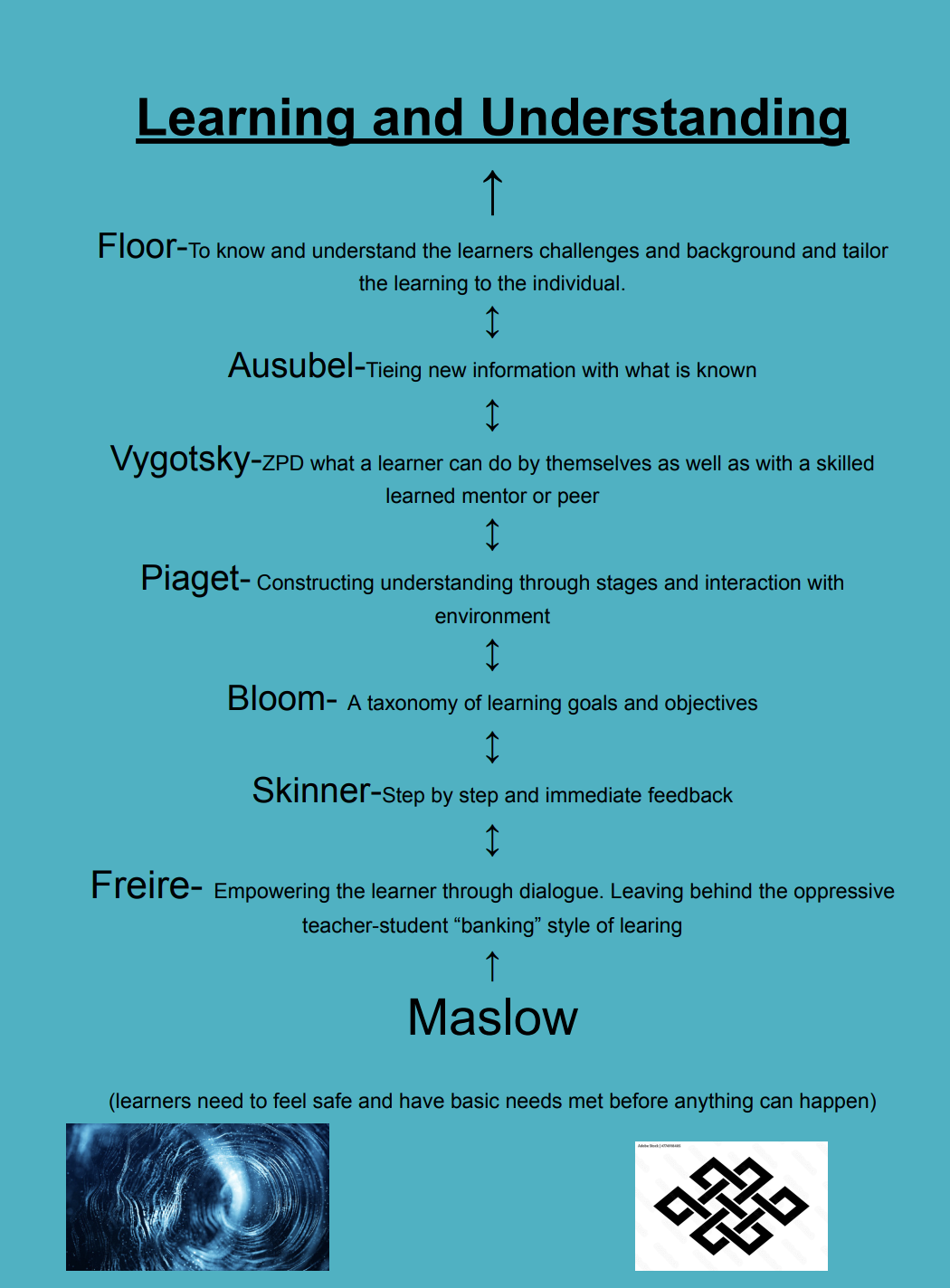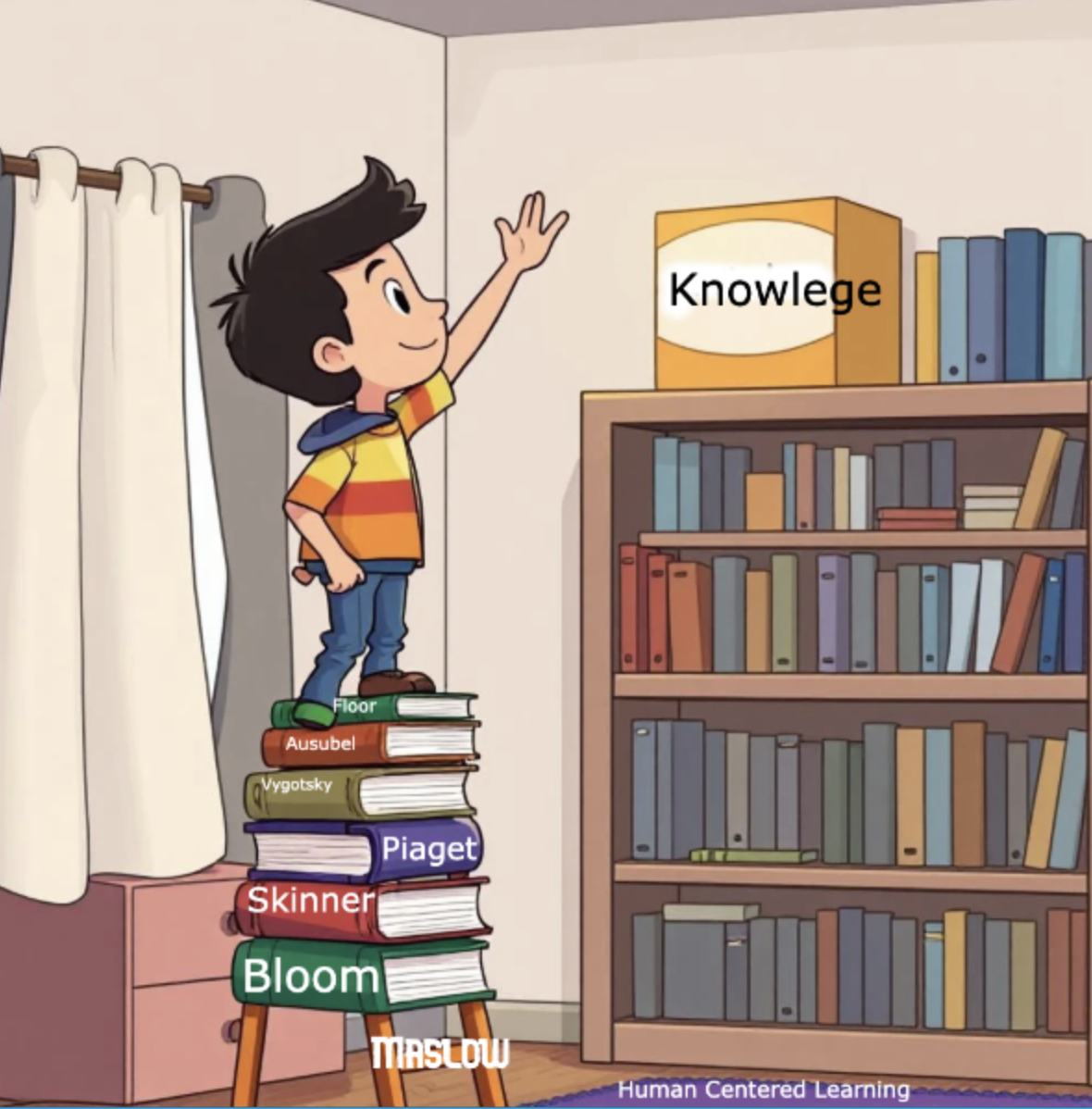Implications and Impact Infograph.
After researching how learning has changed and evolved through time, I took what I learned and made two different infographics showing my personal philosophy on how learning happens. One was a traditional infographic, and the other was an AI-assisted infographic picture. The first one starts with Maslow. A learner has to feel safe and have basic needs met before they can learn. The rest of the “giants” who discovered and studied how we learn all contribute to the process. It is not just one, then the next. Learning is fluid and feeds back on itself. That is why I have the fluid image and the infinity knot. I have Friere next, as learning should not be done through the “banking method” of depositing knowledge, but rather it should be done through asking questions and empowering the learner. Skinner helped show that learning is step-based, and students learn through direct feedback. Piaget showed how learning happens in their environment, again through specific steps and stages. Vygotsky showed that we are capable of our own learning to a point and then need to help of mentors or more knowledgeable others. Ausubel demonstrated that we retain information when we can tie it to a known. It anchors it in and gives it meaning. Most recently, Floor looks at the learners' challenges and background and makes learning to the individual. As an educator and guide, I can help our learners by taking all these concepts from each of these “giants” in learning and creating a special place for learners to succeed. Bloom is great for the teacher to help guide the questioning and assessing by asking the questions that get the most from the learner.
The second image takes the concept of the first infographic and, with an AI-assisted image, turns it into an image of a boy benefiting and being boosted by all the concepts from these “giants” to reach his knowledge. Again, Maslow is the stool on which all else sits. It took a few different ways of adding details into AI to get this image. I then had to do some editing with the book texts. If this were the traditional way of making art, I would have enjoyed drawing and sketching this image out. As I do not have the art skills for online image making, AI made this a more enjoyable experience.
In both of these infographics, I have everything standing on the legs of Maslow. Before students can even start to learn, they need to have their basic human needs met and feel safe and loved. I always make sure to co-regulate students who need it and make sure my students are in a place to learn before any other philosophy or best practice starts.
References
Design, L. E. (2025, February 20). A timeline of learning experience design evolution - LXD: Learning experience design. LXD. https://lxdlearningexperiencedesign.com/learning-theory/lxd-highlights-a-timeline-of-learning-experience-design-evolution/
Free online AI photo editor, Image Generator & Design Tool. Pixlr.com - Creative AI suite. (n.d.). https://pixlr.com/
Furian, P. H. (n.d.). Endless knot, also known as eternal knot. Adobe Stock Image #774918405. Adobe Stock. Retrieved September 1, 2025, from https://stock.adobe.com/.
Kanawat, T. (n.d.). Blue color digital particles wave flow and twist abstract motion technology background concept. Adobe Stock Image #283287120. Adobe Stock. Retrieved September 1, 2025, from https://stock.adobe.com/.

